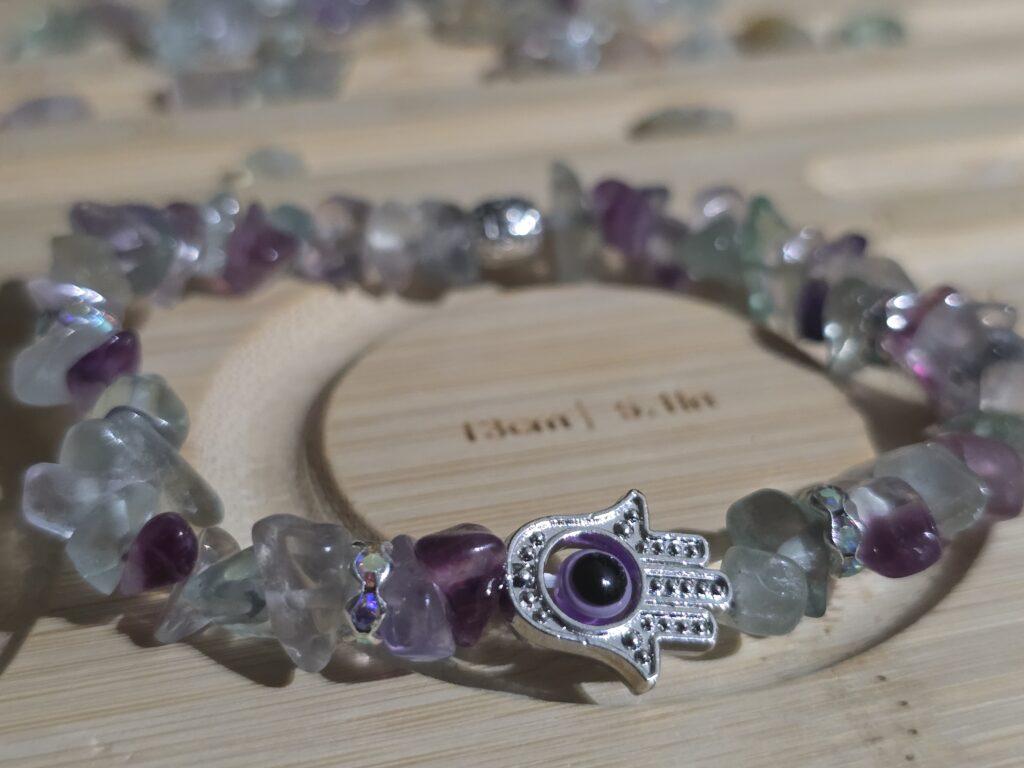The Hamsa Symbol: History and Meaning
The Hamsa, a symbol of protection and good fortune, has been revered across civilizations for thousands of years. Its name comes from the Arabic word “khamsa,” meaning “five,” representing the five fingers of the hand.
Origins and Cultural Significance
The earliest depictions of the Hamsa trace back to Mesopotamian artifacts, where it was linked to the goddess Inanna (Ishtar), symbolizing divine power and protection. In Phoenician and Carthaginian cultures, a similar hand symbol was associated with Tanit, a goddess believed to ward off harm.
In ancient Egypt, the Mano Pantea (or “Hand-of-the-All-Goddess”) was used as a protective amulet, invoking the spirits of Isis, Osiris, and Horus. The Eye of Horus, another Egyptian symbol of protection, is sometimes incorporated into Hamsa designs to enhance its shielding properties.
Religious and Spiritual Interpretations
The Hamsa has been embraced by Islamic, Jewish, and Christian traditions, each attributing unique meanings to the symbol:
- Christian Tradition – Sometimes associated with the Hand of Mary, symbolizing purity, strength, and divine guidance.
- Jewish Tradition – Called the Hand of Miriam, referring to Moses’ sister, it is believed to guard against the evil eye and bring blessings.
- Islamic Tradition – Known as the Hand of Fatima, named after the daughter of the Prophet Muhammad, it represents faith, patience, and divine protection.
Despite its religious connections, the Hamsa predates all major faiths and is widely regarded as a universal emblem of protection and good fortune.
Symbolism and Protective Qualities
The Hamsa is traditionally depicted as an open right hand, often featuring an eye in the center, believed to watch over and shield against negative forces.
- Protection Against the Evil Eye – The Hamsa is commonly used to deflect harmful energy and misfortune caused by envious or malicious gazes.
- Luck, Prosperity, and Health – Many believe it attracts happiness, abundance, and well-being.
- Fertility and Strength – In some traditions, the Hamsa is linked to fertility, motherhood, and feminine power.
Why Wear the Hamsa?
Wearing the Hamsa is more than just a fashion statement—it serves as a personal talisman for protection, balance, and spiritual alignment. Whether worn as jewelry or carried as an amulet, the Hamsa can:
- Shield against negativity and unwanted energy.
- Encourage inner peace and emotional stability.
- Attract prosperity and positive opportunities.
- Strengthen intuition and spiritual awareness.
By wearing the Hamsa, you carry a symbol of ancient wisdom, divine protection, and personal empowerment, making it a meaningful addition to your daily life.
Modern Uses and Adaptations
Today, the Hamsa is found in jewelry, home decor, tattoos, and spiritual artifacts. It is worn as a necklace or bracelet, displayed in homes as a wall ornament, and incorporated into art and fashion.
- Fingers Spread Apart – Used to ward off negativity and protect against harm.
- Fingers Closed Together – Believed to attract good luck and blessings.
The Hamsa remains a timeless symbol of protection, spirituality, and cultural unity, transcending religious boundaries and continuing to be cherished worldwide.

